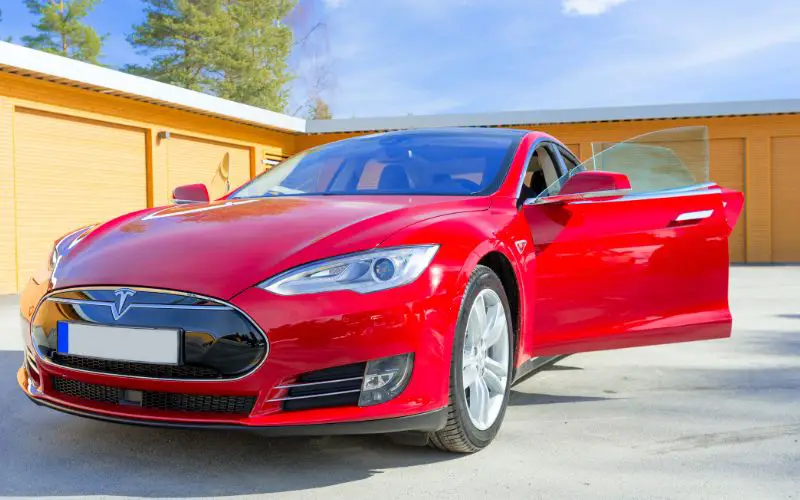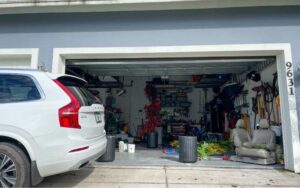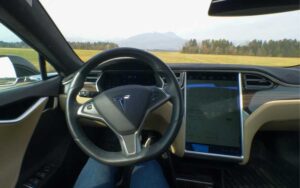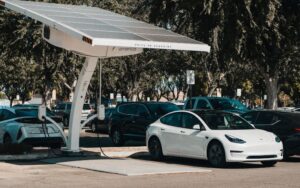5 Reasons For Tesla Volume Not Working!
Tesla tops the list of cars with highly efficient audio systems having impressive features besides its media functions. Tesla’s audio system allows phone calls and alarms, unlike many other vehicles.
However, despite having a state-of-the-art audio system, users often complain that the volume doesn’t work.
You’re in the right place if you are currently experiencing this problem and searching for an explanation or a solution.
The volume of your Tesla may suddenly become inaudible due to several reasons, such as a software bug, radio glitch, defective speaker, or an error in Bluetooth connection. Additionally, you may have mistakenly muted your vehicle’s audio. Whatever the case, rest assured that you can easily regain the sound of your Tesla’s audio system.
In this article, I’ll fully explain the possible reasons responsible for your volume not working and tell you how to resolve Tesla volume issues.
I’ll also discuss why your volume control may stop working, explain how to control the volume, and reset your car’s audio. You’ll know how to fix most Tesla audio system mishaps by the end of this article.
Why is The Volume on my Tesla Not Working?

A functional audio system is one fantastic feature that Tesla users find attractive, but recently, several customers have been experiencing issues with the sound and volume of their cars.
Unfortunately, these problems have resulted in tons of questions from users. Luckily, I’m here to answer them all. There are several reasons why the volume of your Tesla may be inaudible.
Let’s take a look at some of them below.
#1. A Software Bug
One of the most common reasons your Tesla volume may stop working or become unresponsive is the presence of a software bug in your vehicle’s audio or infotainment system.
These software bugs, which mainly result from failed updates, can disrupt many features of your Tesla, with the audio function being one of them.
Though the usual sign of an audio system software bug is a lack of sound, sometimes, the volume may still function, albeit in poor condition.
As with all problems, there’s a solution to this. So, read on to find out.
#2. Radio Glitches and Malfunctions
Aside from a software bug, your Tesla will usually not produce sound when experiencing a radio glitch.
The glitch in Tesla’s radio system often stems from the antenna. You should know that any issue arising from the antenna will likely cause a connection breach.
When experiencing a loss of connection from the antenna, the radio will be the only part of the audio system unable to produce sounds.
So, if other audio functions still possess volume, you should know that the problem isn’t due to a radio glitch or malfunction.
#3. Defective Speakers
Your car’s speakers are responsible for producing every sound ranging from alarm, radio, and voice call. So, it’s an essential audio output component.
Thus, any issue with your vehicle’s speakers, no matter how small, can hinder sound production.
Therefore, you should always pay attention to speaker problems as they could degenerate quickly and affect every sound and volume output in your Tesla.
#4. Bluetooth Connection Error
If Bluetooth is your audio channel, you must ensure a successful connection.
An error notification usually informs you whenever the connection is unsuccessful.
An unsuccessful Bluetooth connection will impair sound production, and you’ll be unable to hear whatever audio you’re playing.
Additionally, you should note that your device Bluetooth will be unable to connect if your battery is low.
Besides the above, you must ensure you didn’t mistakenly connect to another device nearby instead of your car.
#5. Accidental Muting of Sound
If your Tesla volume isn’t working, you may have accidentally muted your vehicle’s sound or reduced the volume.
Whereas if you’re using the radio function, another possibility is that you turned it off unknowingly. So, you should ensure you’re not responsible for the volume issue.
How to Fix Your Tesla Volume Issues?
Seeing the list of possible volume issues may have gotten you worked up. Relax; I will explain how you can resolve all the possible issues.
So, here’s how to get your Tesla’s volume working again.
#1. Schedule a Software Update.
If you’re experiencing system bugs that prevent sound, check for available updates using the software tab or the Tesla app.
If there’s an update, connect your vehicle to a wifi network.
If there’s no update, leave your car connected to wifi so over-the-air updates can commence when the company releases a software update.
Watch these videos and learn to install updates on Tesla models S, 3, X, and Y for more clarity.
#2. Perform a Tesla Soft Reset
You should soft reset your Tesla to resolve a radio glitch or malfunction.
Below are the steps for resetting your car.
- Press the two buttons on the steering wheel.
- Hold the buttons till your Tesla’s infotainment screen turns off.
- Wait for the screen to turn back on, then turn on the radio volume.
However, if the radio problem results from an issue with the antenna, a reset may not always work.
You’ll have to fix the wiring if the antenna has disconnected or gone loose.
#3. Repair or Replace Your Speakers
If your Tesla’s speakers are damaged, you have two options. The first is to replace the speakers yourself.
If you subscribe to the option above, conduct personal research and watch this DIY video to get more information.
If you’re not a hands-on person, you can contact a professional to help you examine the speakers and repair or replace them.
#4. Reconnect Bluetooth
If the audio issue stems from your Bluetooth connection, try reconnecting your device. You should also ensure that your device has sufficient charge.
Lastly, confirm that you haven’t connected to another device instead of your Tesla. If you have, unpair the device and pair it with your car.
#5. Unmute Your Sound/ Turn The Radio on
The volume will not work if the audio is on mute. So to rectify this, you have this, you have to toggle the mute key.
Follow these steps to unmute the sound:
- Click the speaker icon on the control panel.
- Locate the mute button and tap on it to toggle.
If your radio is off, here’s how to turn it on:
- Select music or tap the three dots on your touchscreen, depending on your Tesla model.
- Swipe the music bar upwards and tap on the radio.
- Lastly, choose your preferred radio station from the list of options.
Also, check the level of the volume and increase it if necessary.
To sum everything up, below is a table containing the reasons for your Tesla’s volume issues and their solutions.
| Causes of Tesla Volume Issues | Solutions |
|---|---|
| Software bugs | Schedule an update. |
| Radio glitch or malfunction | Perform a soft or hard reset. |
| Defective speakers | Repair or change the speakers. |
| Bluetooth connection error | Unpair your device and pair it again. |
| Accidental muting | Unmute your radio or increase the volume. |
How do You Control The Volume of a Tesla?
Most Tesla users enjoy driving and listening to music via radio, Bluetooth, or other streaming options.
While certain Models of Tesla will use your speed and climate settings to adjust the volume of your audio automatically, others may not. Therefore, volume control is necessary when driving.
So, you should know how to alternate between high and low volumes as you jam along.
This knowledge will make increasing and reducing your Tesla’s volume easy when listening to music, making a call, or initiating voice commands.
You can control the volume of your Tesla in two ways. The first is with the scroll button on the left side of your steering wheel.
Roll the button to control the volume of all audio functions, including media, calls, alarms, and voice commands.
Rolling upwards increases the volume while downwards decreases it. You can also mute and unmute sound by thumbing the left scroll button.
Alternatively, you can use the arrows around the speaker at the bottom of the infotainment screen to control the volume.
Why is my Tesla Volume Control Not Working?
Aside from your volume not working, another audio problem you can experience with your Tesla is the issue of volume control.
Your volume control may become unresponsive, resulting in an inability to reduce, increase, mute and unmute the volume.
When experiencing this problem, the scroll button on the wheel and the screen arrows may remain functional, but despite this, there will be no audio effect.
This audio problem may be due to a software bug, a system error, or a glitch. To rectify this, you must activate a software update using the steps outlined previously.
If the software update doesn’t fix the volume control problem, try rebooting the infotainment system by pressing both steering scrolls on the steering wheel.
All you need do is hold the scrolls till the infotainment screen turns black, then release it.
This action will reboot the infotainment system and display the Tesla logo before turning it back on.
How do You Reset The Audio on a Tesla?
Resetting your car’s sound system can help you fix audio issues quickly, especially if you’ve tried other fixes to no avail.
Resetting the sound system can also help you to fix any volume control and adjustment issues you may be experiencing.
The sound reset process is easy, and you can perform it within a short time frame.
So when carrying out a Tesla audio reset, you should start by performing an infotainment or a soft reset on your car using the scroll buttons.
If unsure how to do this, please scroll to the previous section and review the steps again.
After performing the soft reset, go to the touchscreen and click “safety & security,” then select “power off.”
The screen and the car will turn off for a hard reset. After a few minutes, place your foot on the brake, and your vehicle will come on, indicating that the hard reset is complete.

Hey, I’m Michael Davis, a 35-year-old with a degree and a love for cars and tech. Since I was a kid, cars have been my thing—so much that I even thought they ran on magic beans! Fast forward, and I’ve built Vehicle Army, your one-stop-shop for easy-to-understand car facts.







